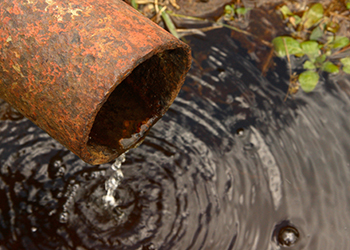
The issue
British Columbians are fortunate to have a range of the purest, safest, water sources in the world. Still, the possibility of water-borne, water-washed, and water-based illnesses concerns civil engineers, health officials and consumers. Canadian surveillance data suggest that potentially waterborne intestinal infectious diseases account for about 20% of reported communicable disease cases.
A group of University of British Columbia researchers from public health, pathology, civil engineering and sustainability streams collaborated in a unique study. Their purpose was to identify factors associated with disease incidence across multiple water and sewage systems.
They based their study in Langley, because it encompasses rural and urban areas with varied and well-characterized water supply and sewage disposal systems. Langley’s illness rates are similar to those elsewhere in North America, so they serve as a good model. The researchers evaluated water sources like groundwater and surface water, distinguished which homes used municipal or private supply and sewage systems, and then looked at doctor visits or hospitalizations for gastrointestinal infections.
Data sources linked
- Health data: MSP billings and hospital discharge sheets
- Environmental data, including water: Federal, Provincial and Municipal sources
What did we learn?
- Municipal sewer systems were associated with an increased risk of gastrointestinal infections.
- Residents who used chlorinated water sources had less doctor visits for gastrointestinal infections.
- Private wells did not show an increased risk of disease, likely because residents were aware of and attentive to water quality.
- As predicted, women, babies, elderly, and low-income individuals showed higher rates of physician visits.
- Decreased duration of residence in the area (Langley) was associated with an increased risk.
"Most studies in the past have looked at water from a health point of view, and then other studies have been done on water systems by civil engineers. This study was meant to bring together health and engineering for the purpose of policy making…
In my experience, and the experience of many other people, single ways of controlling health risks rarely work. It’s best to use multiple modes of protection.”
Kay Teschke, Prinicpal Investigator, Langley Water and Health Study
Making a difference
- The higher disease rates for municipal sewer users may be related to other factors not accounted for in this study. Still, it is prudent to consider possible explanations. Guidelines and standards for separations between sewage and water supply lines are important. If other studies find similar results about municipal sewer systems, we may need to reassess current standards.
- Reinforcement that water-chlorination is an effective way of combating water-borne diseases.
- Targeted awareness strategies are necessary to alert those who are susceptible, including those who have recently moved to the neighbourhood, those with immune deficiencies, babies and the elderly. Parents and caregivers need to be educated about the increased risks.
